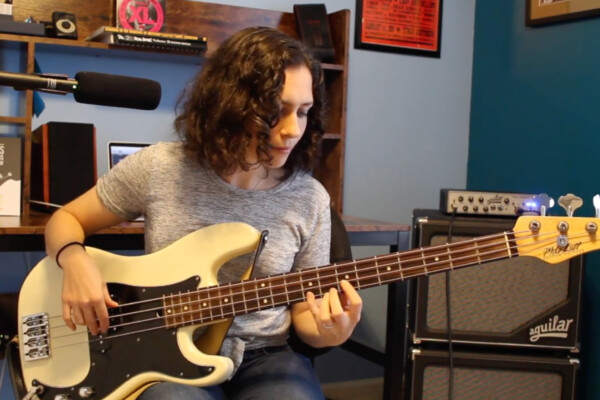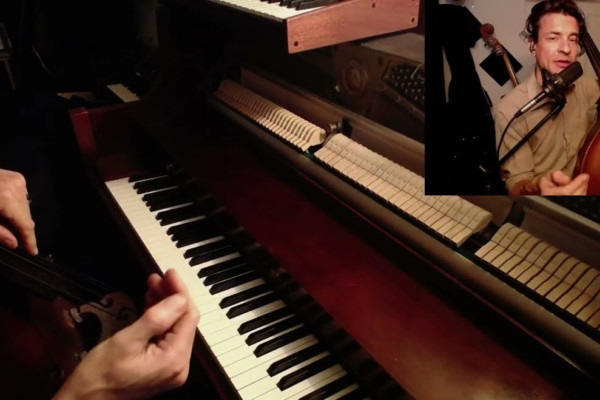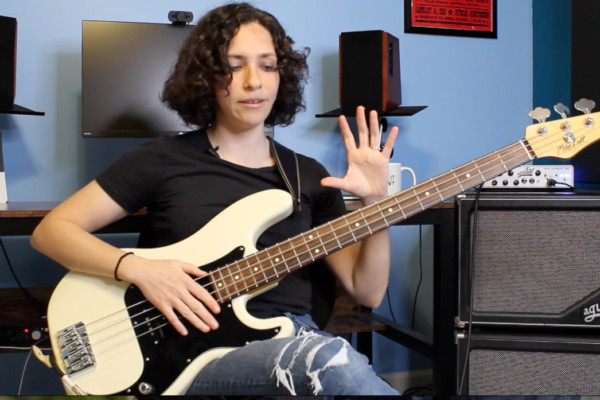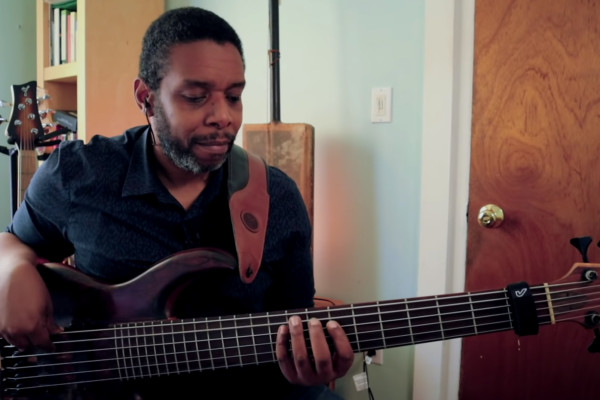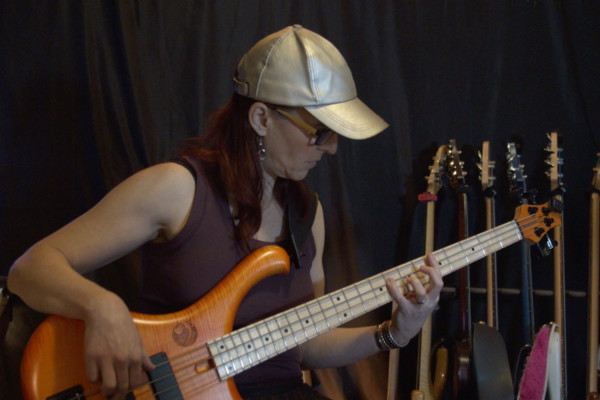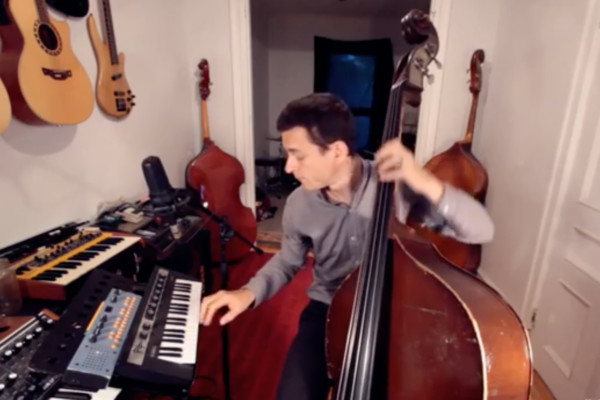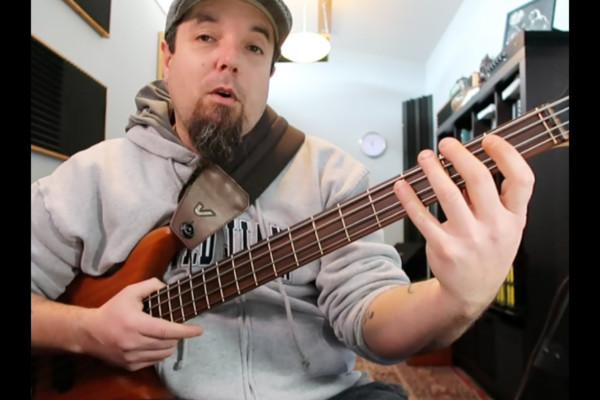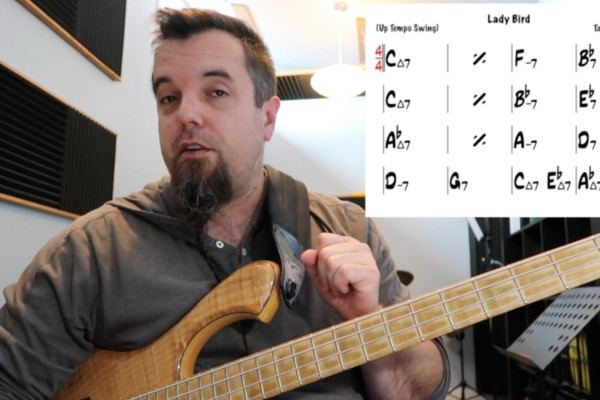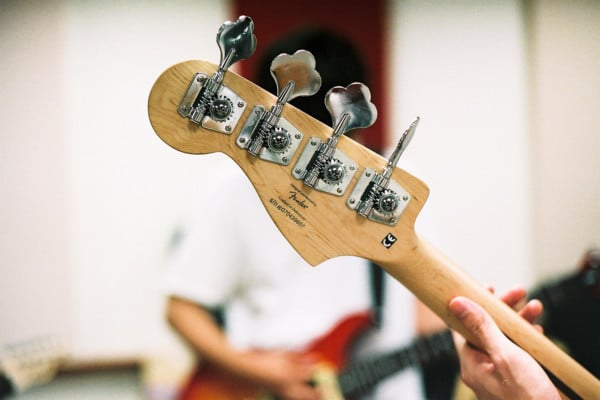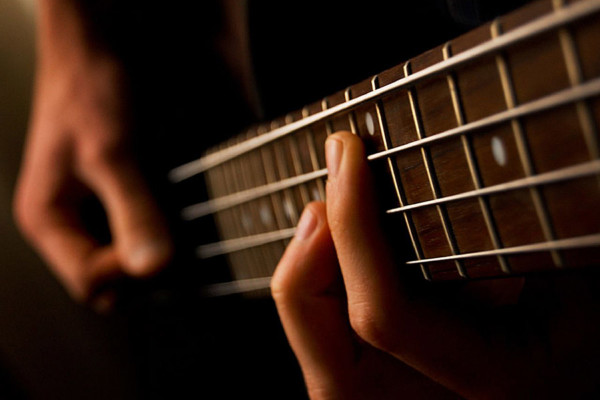Chord Changes Archives
Keep It Groovy: Integrating Concepts In Our Walking Bass Lines
In this “Keep It Groovy” lesson, Ryan Madora plays through a very common chord progression in jazz and pop, the 1-6-2-5 chord progression. We’ll learn how to integrate different concepts to begin building a walking bass line.
Bass & Creativity: Chord Colors & Building Harmonic Movement
Olivier Babaz is back with another “Bass & Creativity” lesson. He covers how we can progressively build chord changes, starting from a static modal section and adding modulations and harmonic movement to it while keeping a consistent groove.
Keep It Groovy: Finding The One, Four, Five
One of the most common phrases spoken at a jam session is “it’s just a one, four, five!” Long story short, it’s a very helpful hint... if we know how to find our ones, fours, and fives.
The Brown’stone: The Essential Key to Unlocking the 2-5-1 Chord Progression
This week in The Brown’stone on No Treble, Rich Brown takes a look at a great way to practice when playing over the II-V-I chord progression. These tips and exercises open up the mind (and the fretboard).
Talking Technique: Triads Versus Four-Note Chords
Triads versus four-note chords – which are harder? Your gut reaction to that question may be that four-note-chords are harder. Ari tackles this topic in this bass lesson.
The Lightbulb Moment: Discovering The Key
One universally befuddling inquiry is deceivingly simple, “what key are we in?” As easy as it sounds, the key of a song can often be interpreted in different ways. That’s the subject of this “Lightbulb Moment” column.
Tapping Technique: Developing Simultaneous Chordal and Bass Line Accompaniment
One way of applying your tapping skills to either a solo context or with a small ensemble is to create both chordal and bass line accompaniment at the same time. In this new “Tapping Technique” lesson, Josh Cohen covers this topic.
Bass & Creativity: Modulation and Chord Progressions
In this “Bass & Creativity” lesson, Olivier Babaz dives into the mechanics of modulation within chord changes. You’ll learn how to navigate between tonalities, building harmonic sequences borrowing chords in two different, yet related tonalities.
How To Play Through Difficult Tunes
This week, someone asked me how to play through "Giant Steps," so I made this video to break down my process. We'll dive into working through difficult sets of changes and talk about how to think about it.
Walking Bass Line Construction
In this video, I’ll talk you through the basics of developing a walking bass line in addition to demonstrating a few approaches. There’s also a nice exercise at the end that’ll really challenge most of you as you explore new ways to navigate chord changes. Enjoy! Follow along with this chord chart I used in this lesson.
The Lightbulb Moment: One, Four, Five
“Hey, so we’re in G and it’s a one, four, five thing. Cool? Count it off.” Here we go again… Whether it’s a local blues jam, and evening hang at your friend’s garage-turned-music-room, or a gig where someone decides to deviate from the setlist, the notion of calling a “One, Four, Five” can leave us bass players a little high...
Should I Bother With Modes?
Q: First of all thank you very much for your past reply to my question! Lately while working on improvisation and in particular on linear melody through changes, I started asking myself why I should bother with modes. For instance, if there’s a Fmin7 moving to an Amin7 chord and I want to think about those two chords as F...
